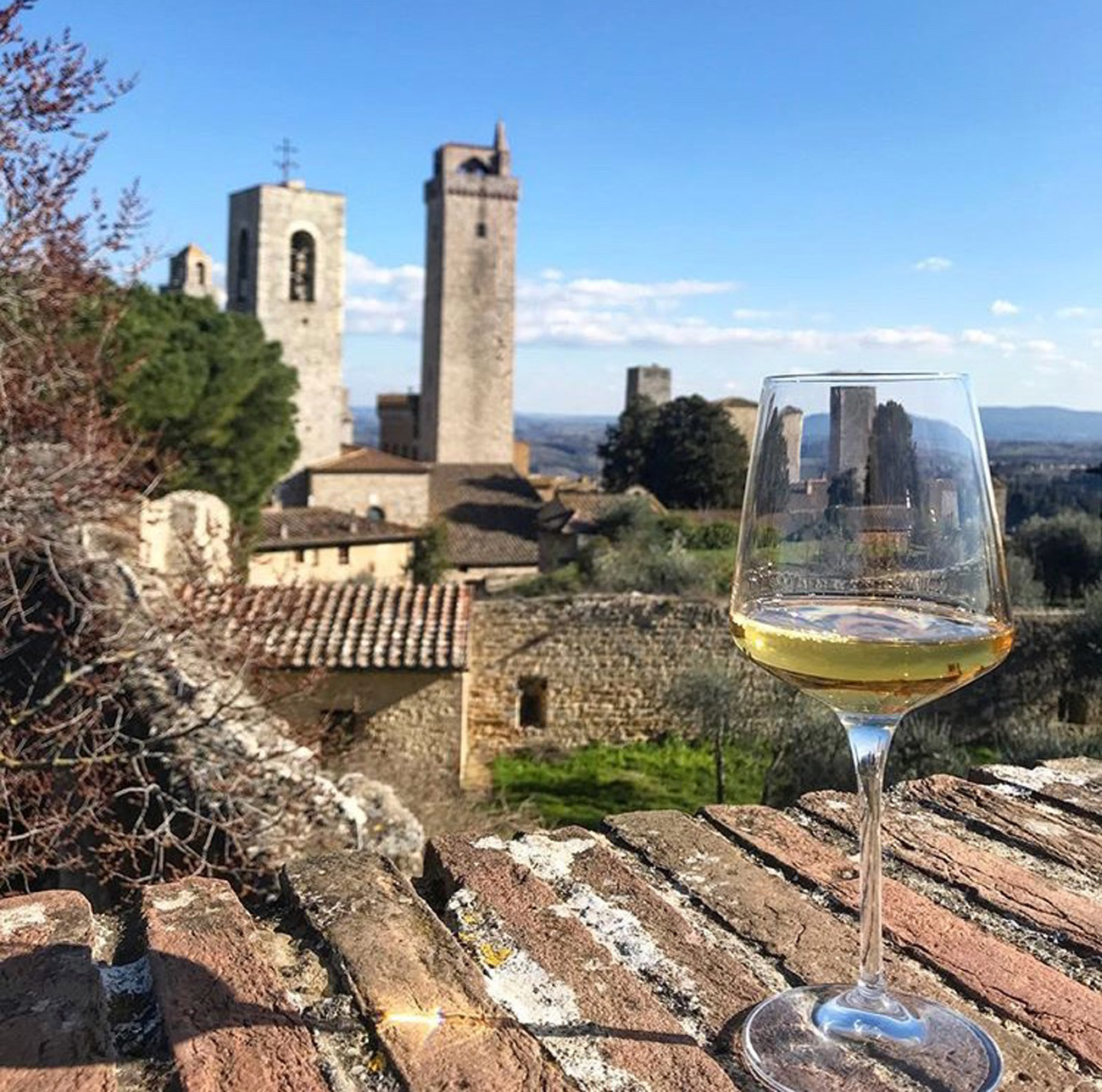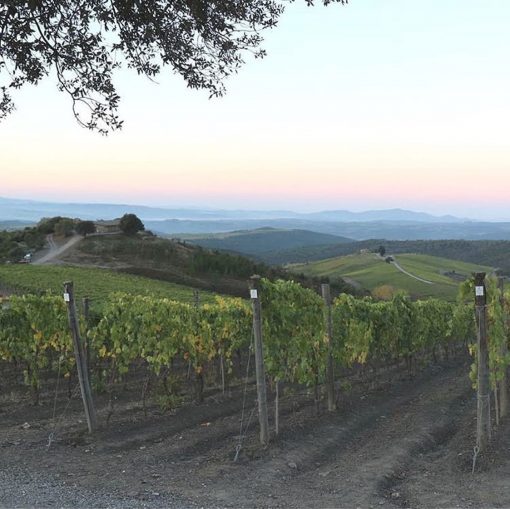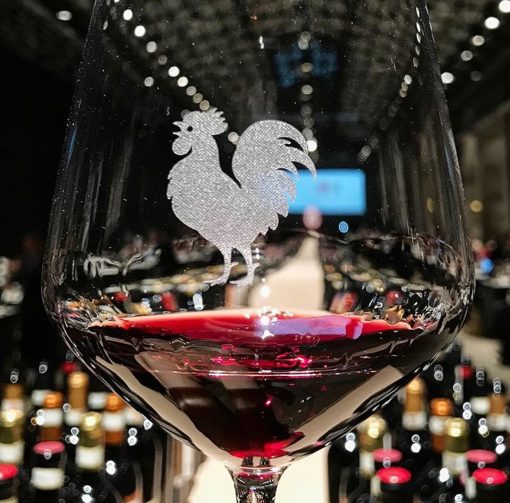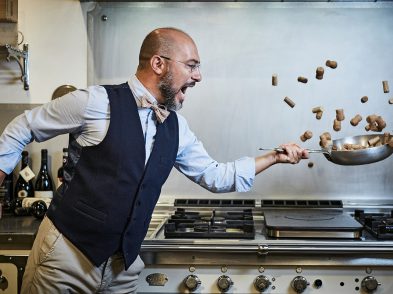Every February the region showcases the new vintages that will be released to market. Press and trade have the opportunity to taste almost everything produced “under the Tuscan sun”. The bad news is that there’s so much going on we would need an entire magazine to cover it all. The good news is that wine is getting better and better each vintage. This isn’t a generic endorsement of Tuscan wines. The thing is, I really love the direction Tuscan wines have been taking in the last five years. In a nutshell, producers, big and small, are moving from a big and bold attitude to an agile and lyrical approach to winemaking. Not only is it a positive switch for wine lovers, but especially for people who love to drink and not just taste the liquor, so less body-building prize-winning styles amounting to more elegance and drinkability.

All photos via @filippo.bartolotta on Instagram
Let’s start with the region’s most important white: Vernaccia di San Gimignano. Italy’s first DOCG unfortunately doesn’t hold a great reputation with Tuscan people in general and specifically with Florentines. Too many cheap and nasty souvenir wines are sold to tourists in the immaculate UNESCO World Heritage site-village. But this was a long time ago, so wake up because Vernaccia is a source of amazing, refreshing, non-aromatic whites with very delicate white fruit and citrus aromas and a mineral complexity. By mineral, I mean that intriguing taste of stones and gunflint with which we are all familiar. The 2017 vintage with its super draughts wasn’t an easy one, but the finest winemakers were able to harvest a few weeks earlier than usual to bring home some fresh fruit. When it comes to Vernaccia make sure you also try some older vintages. The fact that this wine is capable of ageing for decades is one of the worst-kept secrets among wine lovers! Plus, another amazing add-on is the price: regular Vernaccia can be found on the shelves for less than 15 euro. The Selezione and Riserva, often smoother and creamier due to some oak presence, fit into the 10 to 25 euro bracket. If these wines were French we’d be sure to find another zero at the end of the price tag! Panizzi Vigneto Santa Margherita is one of my favorites, combining a creamy and zesty character. Il Colombaio packs in a lot of fruit and sweet aromas of pears, snowflakes and lime, while Montenidoli Fiore is a classic capable of pleasing almost any palate and La Lastra has a super Riserva 2015 with pencil shavings—I know because I used to chew pencils when I was at grammar school—as well as citrus fruit and flowers.
In the red wine kingdom things become way more complex. Tuscany is all about Sangiovese of course and most DOCGs are based on this grape, which boasts different nicknames in different areas. Let’s start with the appellation that, by law, can only bottle 100 per cent Sangiovese: Brunello di Montalcino. This wine has to age for a minimum of five years, six for the Riserva. The result is a full-bodied red bursting with ripe cherries, Mediterranean herbs, balsamic notes and some pretty important tannins. The best examples have got so much sweet natural fruit they become intoxicating. Some of these labels rank in the world’s best wine lists. Brunello can almost age for ever, but it gets pricey. A bottle can start at 25 euro and reach more than 250 euro, so 40 to 50 euro will give you access to some serious juices! The 2013 vintage is fruit-driven and juicy, while the 2012 Riserva is powerful and structured. Expect to be amazed by Tenuta Le Potazzine, a family-run winery producing high-altitude world-class Brunello. From Tenuta di Sesta enjoy sweet fruit and an energetic mouthfeel. Col d’Orcia Riserva 2012 is all about power, elegance and austerity while Lisini Riserva is a ready-to-drink option with balsamic complexity. Pietroso Rosso di Montalcino and Baricci Rosso di Montalcino 2016 are two of the best value-for-money labels in Tuscany.
Not too far from Montalcino we find Vino Nobile di Montepulciano. Here Sangiovese becomes Prugnolo Gentile: my tip is to visit one of the 16th-century monumental cellars in town to get a whole nine yards experience! The 2015 vintage is about fruit and generosity. Try Avignonesi for a great biodynamic option, Dei for a more extractive and powerful taste, Lunadoro for a sweeter and smoother version, and Boscarelli for tannic structure and elegance.
Chianti Classico is the oldest and most traditional of Chiantis. Chianti is a broad geographical area in the heart of Tuscany and Chianti Classico is only produced in the hills between Florence and Siena. In general terms, expect to find very lean reds with crunchy sour cherries from Chianti, while from Chianti Classico you’ll encounter more intense wines with a lot of cherries, licorice and violets. The 2016 vintage for me is one of the most exciting, easy-to-drink and yet complex there’s been in years! From the 2015 Riserva, more structure and concentration of fruit awaits. Chianti Rúfina is one of my favorite sub-Chianti zones, always delivering wines with a great tannic grip and a floral touch.
For riper and more sun-friendly reds, take a pick at Morellino di Scansano (another nickname for Sangiovese) from Southern Tuscany. Try Val delle Rose for a great easy and perfumed 2016 or the blueberries and juniper notes of the more extractive Le Pupille Riserva Poggio Valente 2015.
One last note on Cortona, home of Syrah, where this year had me literally falling in love with Stefano Amerighi’s 2014 Apice, a biodynamic Syrah with multilayered sexiness and dangerous drinkability!








